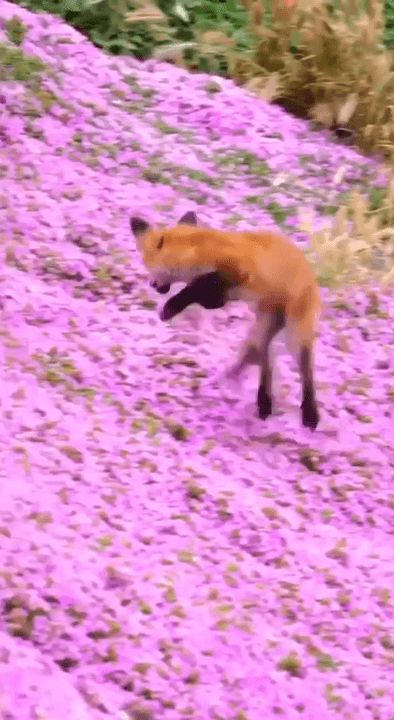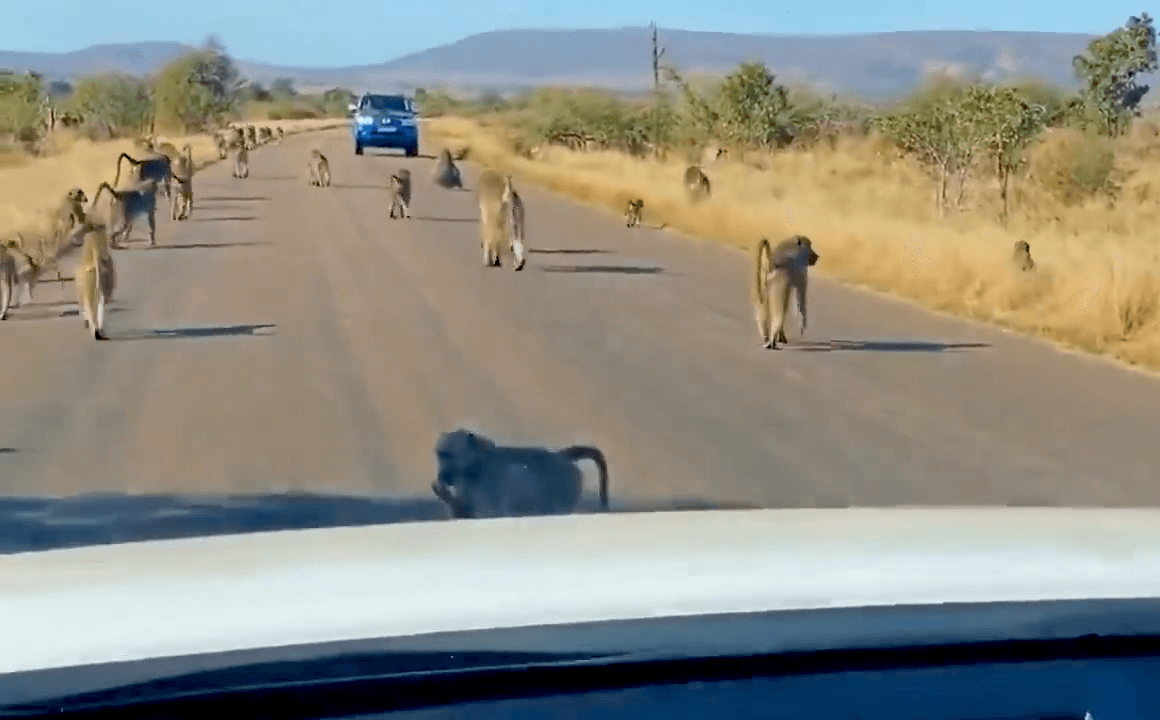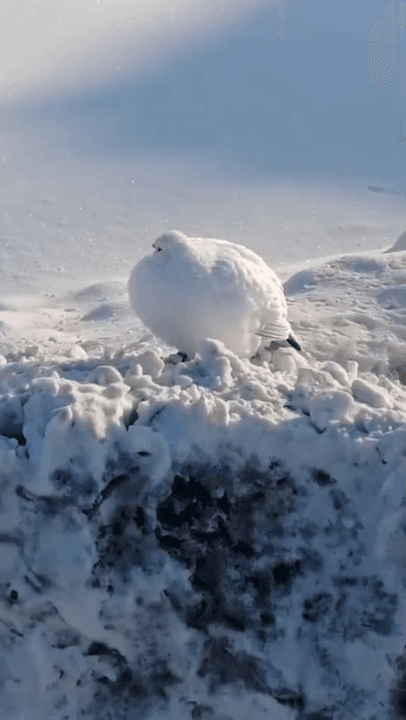Results by search “areas” 722
Explore Tasman hunting regions: a blend of beauty and adventure, seasonal hunting schedules and hunter demographics
Terrain and natural properties of the region that inspire hunting
From the mountain ranges of Kahurangi National Park to the Motueka and Buller river valleys, the Tasman region is renowned for its contrasting landscapes. Mountain ranges with elevations of up to 1800 metres provide ideal conditions for hunting ungulates, while dense forests and alpine meadows provide camouflage and surveillance. A significant part of the territory (about 30 per cent) belongs to protected areas, which guarantees the preservation of ecosystems. The climate is temperate, with warm summers (up to +25°C) and mild winters (up to +5°C), which allows hunting all year round, taking into account seasonal restrictions.
Hunter demographics in Tasman
According to the 2023 Department of Conservation (DOC) data, there are approximately 1,200 active hunters registered in the region , of which 70% are lo
Hunting in UMBRIA: Clubs, Laws and Legislation, Communities and Demographics. Discovering the Wild Boar and Migratory Birds of Lake Trasimeno
Geography and Natural Features
Umbria, the green heart of Italy, offers ideal landscapes for hunting thanks to its geographic diversity. The region is dominated by the Apennines, with peaks like Monte Vettore (2,476 m), and rolling hills rich in oak, chestnut, and beech forests. The Tiber and Nera rivers, along with Lake Trasimeno, create diverse ecosystems. Umbria, known as the "Green Heart of Italy," is a prime destination for woodcock hunting, wooded areas cover 36% of the territory, hosting wildlife, while the wetlands of Trasimeno are vital for migratory birds.
Hunter Demographics
Currently, there are approximately 20,000 hunters in Umbria: 12,000 in the province of Perugia and 8,000 in the province of Terni. About 72% are aged between 45 and 65. Most are locals, but the region also attracts hunters from other parts of Italy, especially
Hunting in TRENTINO-ALTO ADIGE: Laws and Clubs, Legislation and Seasons. Among the Dolomites, Chamois and the Hunting Soul of the Alps
Geographic and Natural Features of the Region from a Hunting Perspective
Trentino-Alto Adige, located in northern Italy, is a predominantly mountainous region dominated by the Alps. It is one of Italy’s premier hunting destinations, offering some of the best alpine hunting experiences in the country. The Dolomites, a UNESCO World Heritage Site, provide ideal habitats for deer, roe deer, chamois, and ibex. The forests of spruce and larch are rich in wildlife, while the valleys and hilly areas are home to hares, foxes, and capercaillies. The region is also characterized by numerous lakes and rivers, which support waterfowl populations.
Hunters and Demographics of the Region
According to data from the National Hunters Association (Federcaccia), there are approximately 12,000 registered hunters in Trentino-Alto Adige. Most hunters are men aged between 4
Hunting in Northumberland, England: hunters and demographics of the region, types of hunting and hunting animals, hunting legislation
Geographical and natural features of the region
Northumberland is a region with a diverse landscape that includes hills, valleys, forests, and the coast. Northumberland National Park, which occupies a significant part of the territory, is home to many wild animals and birds. Here you can find extensive moorlands, which are ideal for hunting grouse and grouse. The region's forests are rich in deer, hares and foxes, and the rivers and lakes attract waterfowl hunters.
The climate in Northumberland is temperate, with cool summers and mild winters, making hunting comfortable for most of the year. However, the weather can be changeable, especially in hilly areas, so hunters should be prepared for sudden changes.
Hunters and demographics of the region
Northumberland is a region with a long—standing hunting tradition. It is estimated that there are about 5,0
The Plott Hound: A Hunter's Guide to This Versatile Breed
For the serious hunter looking for a dog with grit, stamina, and brains, the Plott Hound stands out. Bred for big game, these dogs are more than just trackers; they're partners in the field.
What Does a Plott Hound Hunt?
Big Game Specialists: Plott Hounds are legendary for their ability to track and bay bear, boar, and even mountain lion.
Versatile Hunters: They can also be used effectively on raccoon, deer, and other smaller game.
Scent Tracking: Their strong noses and determination make them excellent for following both fresh and cold trails.
Where You'll Find Plott Hounds Hunting
United States: Primarily in the Appalachian region (North Carolina, Tennessee, West Virginia), where their heritage is strongest.
Canada: Increasingly popular for bear and boar hunting in forested areas.
Europe: Emerging as a breed of interest for hunters in countries with wild boar populations (Germany, France).
Plott Hound Characteristics
Chesapeake Bay Retriever: Characteristics, Training & Hunting Prowess. The Ultimate Hunter's Guide.
The Chesapeake Bay Retriever, or "Chessie," isn't just another pretty face in the dog park. This breed is built for hard work, icy waters, and bringing back the goods, day in and day out. If you're looking for a tough, reliable retriever, read on.
What Does a Chesapeake Bay Retriever Hunt?
Chesapeakes were bred to retrieve waterfowl, period. Ducks and geese are their bread and butter, especially in harsh, cold environments. They're not typically used for upland game, but their retrieving instincts can be adapted if you're willing to put in the work.
Where Are Chesapeake Bay Retrievers Common Hunting Partners?
Originally from the Chesapeake Bay region of the United States, you'll find these dogs working in areas with cold water and tough conditions. Think:
United States: Especially the Mid-Atlantic region (Maryland, Virginia, Delaware), the Great Lakes states, and the Pacific Northw
The Irish Setter: A Hunter's Guide to This Versatile Gun Dog
The Irish Setter, with its striking red coat and boundless energy, is more than just a beautiful dog. Bred for upland bird hunting, this breed has a rich history and a deep-seated instinct to work in the field. This guide provides practical information for hunters considering or already hunting with an Irish Setter.
What Can an Irish Setter Hunt?
Upland Birds: Irish Setters excel at hunting quail, pheasant, grouse, woodcock, and other game birds found in fields and wooded areas.
Waterfowl (Limited): While not primarily waterfowl specialists, some Irish Setters can be trained to retrieve ducks and geese in shallow water.
Small Game: Some hunters use Irish Setters for rabbit hunting, though their flushing style may not be ideal for all terrains.
Where Are Irish Setters Popular Hunting Dogs?
United States: The breed is well-established in the U.S. and commonly used for bird hunting, especially in the Midwest and Eastern r
Zebra Hunting in Namibia: A Striped Trophy Worth Pursuing
Namibia, a land of vast savannas and dramatic landscapes, offers a unique hunting experience. Among the diverse game species that roam this African nation, the zebra stands out as a strikingly beautiful and challenging trophy. Hunting zebra in Namibia requires skill, patience, and respect for the animal.
Why Hunt Zebra? The Allure of the Stripes
Zebra hides create stunning rugs, accent pieces, and conversation-starting decorations. Hunting one is also a great way to add some challenge and satisfaction to your overall Namibian safari. Zebra meat can be used for processing into biltong and droëwors.
Hunting Methods: Stalking and Ambush
Stalking: The most common and arguably most rewarding method is stalking. Zebra herds often graze in open areas, requiring hunters to utilize natural cover like bushes, termite mounds, or dry riverbeds to approach within shooting range. Success depends on your ability to move silently, read the
Hippo Hunting in Uganda: season, methods, costs.
A Practical Guide for Hunters.
Uganda, known as the "Pearl of Africa," offers a unique and challenging hunting experience: pursuing the mighty hippopotamus. While not for the faint of heart, a carefully planned and ethically conducted hippo hunt in Uganda can be a truly memorable adventure. This guide provides essential information for hunters considering this pursuit.
General Information: The Hippo as a Game Animal
Hippos are formidable creatures, capable of inflicting serious damage both on land and in the water. They are primarily nocturnal, spending their days submerged in rivers and lakes to stay cool. Understanding their behavior, habitat, and vulnerability is crucial for a safe and successful hunt. In Uganda, hippo hunting is primarily conducted as a method of population control in specific areas where they pose a threat to local communities or agriculture. This hunting must be done with strict adherence to Ugandan Wildlife
The Enigmatic White Ptarmigan (Lagopus lagopus): A Master of Arctic Survival
The White Ptarmigan, scientifically known as Lagopus lagopus, is a fascinating bird that thrives in some of the harshest environments on Earth. Often referred to as the Willow Ptarmigan in North America, this species is a true symbol of resilience and adaptation. With its striking seasonal plumage changes, the White Ptarmigan seamlessly blends into its surroundings, making it a marvel of nature.
Habitat: The Arctic and Beyond
The White Ptarmigan is primarily found in the Arctic and subarctic regions of the Northern Hemisphere. Its range spans across the tundras of Alaska, Canada, Scandinavia, and Russia. During the summer months, it inhabits open tundra, moorlands, and willow thickets, where it feeds on a diet of buds, leaves, and berries. In winter, it migrates to lower elevations or more sheltered areas, often seeking out willow and birch forests.
What makes this bird truly remarkable is its abilit
Where to Hunt in Morocco: Top Local Regions and Clubs
Morocco is a rugged, game-rich country with a long tradition of hunting. From the dense cork oak forests of the Rif to the arid slopes of the Béni-Snassen Mountains, the kingdom offers a wide range of terrains and species for hunters who want real action—not tourist fluff. This guide focuses exclusively on local Moroccan hunting areas and reserves, including private concessions and state-managed zones. No international outfitters, no ethics lectures—just real places where real hunters go.
---
📍 Top Hunting Regions in Morocco
1. Middle Atlas Mountains (Azrou, Ifrane, Khenifra)
• Game: Wild boar, Barbary partridge, hare, woodcock
• Terrain: Cedar forests, rolling hills, river valleys
• Local Operators: Chasse Azrou, Club de Chasse Ifrane
• Why Hunt Here: High altitude forests with strong populations of wild boar and upland birds. Snow in winter adds challenge. Dogs and beaters are commonly used.
---
2. Béni-Snassen Mountains (
SPORTSMAN’S PARADISE!
89.4+-ACRES $2,500,000
Sandy, OR
Both sides of the Sandy River/Year Around Salmon/Steelhead fishing, Stocked Ponds with Trophy Trout up to 20Lbs, property backs to 2546 acres of BLM, lots of wildlife, ELK, DEER, BEARS, Cougar, Ducks, Geese, Turkey, multiple buildings, Income producing, LOP Big Game Hunting TAGS, 2 of each, Anterless Elk, Anterless Deer, Spring Bear. Bull Elk & Buck Deer in this unit are over the counter general season tags for archery & rifle seasons, general over the counter tags also include 2 Fall Bear tags and 2 Cougar tags/open year around. Multiple Year Around Creeks and Springs, Low Timber Deferral Property Taxes $5243 in 2024, only a 50 minute drive to the Portland Airport, 25 mins to Mt Hood and snow skiing
Home
• 1756 plus sq ft, 1949 fully remodeled in 2008/2009, 4 bedrooms and 2 full baths
• Propane forced air, central air conditioning – electric
• Wall heater in primary bedroom
• Propane generator back up – runs partial areas in h
Duck Hunting Methods in Morocco: Field-Proven Techniques, Regional Strategies & Dog Work 🦆
Duck hunting in Morocco isn’t a packaged experience—it’s raw, seasonal, and shaped by terrain, weather, and tradition. From the tidal lagoons of Merja Zerga to the inland marshes of Tadla, each region demands a different approach. This guide breaks down the actual hunting methods used by Moroccan waterfowl hunters, with detailed insight into setups, dog breeds, regional tactics, and how the hunt unfolds in real time.
---
🎯 Morning Flight Shooting (Most Common Method)
This is the bread-and-butter technique for duck hunters across Morocco. It’s used in nearly every wetland zone—from River Camp’s lakes to the reed beds of Souss-Massa.
🔹 How It Works:
• Hunters arrive at the blind or natural cover before dawn, usually by 5:30–6:00 AM.
• Ducks begin flying in 30–45 minutes after sunrise, heading from roosting areas to feeding zones.
• Shots are taken as birds pass overhead or swing into decoy
Hunting Places in Morocco: An In-Depth Guide
Morocco is a country rich in culture, diverse landscapes, and a variety of wildlife. For avid hunters, Morocco offers unique hunting experiences that are both exhilarating and rewarding. This guide will delve into some of the best hunting spots in Morocco, covering the types of game available, the best times to hunt, and tips to ensure a successful hunting trip.
Understanding Morocco's Hunting Landscape
Morocco's diverse geography—from coastal areas to mountains and deserts—creates a plethora of habitats for various game species. The country is home to an impressive array of wildlife, including small game, big game, and migratory birds. The most prominent hunting regions are the Atlas Mountains, the Rif Mountains, and the vast wilderness of the Sahara Desert.
The Rich Biodiversity of Morocco
One of the key features that make Morocco an appealing hunting destination is its rich biodiversity. The country's varied habitats support numerous
Hunting Trips in Morocco: A Comprehensive Guide
When you think of Morocco, images of vibrant souks, stunning landscapes, and rich culture might come to mind. However, Morocco is also an excellent destination for hunting enthusiasts. The diverse terrain, favorable climate, and rich biodiversity make it an attractive locale for hunting trips. In this article, we will explore everything you need to know about hunting trips in Morocco, including the best hunting areas, species you can hunt, regulations, and tips for a successful trip.
The Allure of Hunting in Morocco
Morocco offers unique hunting experiences that few other countries can match. The country’s varied landscapes range from coastal regions and fertile plains to the rugged Atlas Mountains and expansive deserts. This diversity supports a wide range of wildlife, making Morocco a prime location for various hunting activities.
One of the main attractions of hunting in Morocco is the opportunity to hunt game that is either rare or
Tips for Camouflage in Hunting: Choosing the Right Camouflage, Blending In, and Minimizing Noise
Effective #camouflage is key to a successful #hunt, as blending into the environment lets hunters approach their target undetected. Here are some tips on choosing the right #camouflage_gear, staying hidden in the forest or open areas, and minimizing noise.
Camouflage: How to Choose the Right One
The choice of camouflage depends on the terrain, season, and time of day. In the forest, green and brown tones help blend in with trees and foliage, while in winter conditions, a white-grey camouflage works best on snowy terrain. For hunting in open plains, beige and brown colors are better, blending in with grass and dry landscapes. Seasonal #hunting_camouflage also varies: summer clothing is lightweight and breathable, while winter gear is warm and can come with snow covers.
Blending in on Different Terrains
Beyond camouflage, choose #hunting_gear that doesn’t stand out in the environment. Hats
A hunter in the steppes of the Kazakh SSR. The 1950s.
Traditional Hunting in the Steppes of the Kazakh SSR in the 1950s
In the 1950s, the vast steppes of the Kazakh Soviet Socialist Republic (Kazakh SSR) remained a land of open horizons, sweeping grasslands, and a deeply rooted nomadic heritage, despite the sweeping changes brought by Soviet modernization. Amid collectivization, industrialization, and the push toward urbanization, traditional hunting practices persisted—adapted, transformed, but not entirely extinguished—among the rural Kazakh population.
Hunting in the Kazakh steppes during this era was not primarily a sport, as it might have been in the West, but a practical means of survival, a cultural tradition, and a way of maintaining a connection to ancestral ways in the face of rapid societal change. For many Kazakh families, especially in remote rural areas, hunting supplemented food supplies in a time of scarcity and limited access to markets. It also preserved a sense of
Hundreds of species of #mammals, #birds, #fish, #reptiles, and #amphibians have been documented, including several that are either endangered or threatened. The vast forests and grasslands also include unique species of plants. Yellowstone Park is the largest and most famous #megafauna location in the contiguous United States. #Grizzly bears, #cougars, #wolves, and free-ranging #herds of bison and #elk live in this park. The Yellowstone Park bison herd is the oldest and largest public bison herd in the United States. Forest fires occur in the park each year; in the large forest fires of 1988, nearly one-third of the park was burnt. Yellowstone has numerous recreational opportunities, including hiking, camping, boating, fishing, and sightseeing. Paved roads provide close access to the major geothermal areas as well as some of the lakes and waterfalls. During the winter, visitors often access the park by way of guided tours that use either snow coaches or snowmobiles.
Wisconsin
Known for cheese, farm fields, big hardwood timber, and the Green Bay Packers, the Badger State is also among the states with the most deer, at least according to Kip Adams, a wildlife biologist and chief conservation officer of the National Deer Association.
While Wisconsin doesn’t estimate its deer herd numbers, Jeffrey Pritzl, a wildlife biologist with the Wisconsin DNR, provided some insight. “We don’t generate a statewide deer population,” he said, “because it’s a really big number that doesn’t translate well to the individual hunting experience due to widely varied deer densities. However, it’s safe to say that there are well over a million deer, especially pre-deer season. In our online Deer Metrics System, we provide a graph of the statewide post-hunting season population. Some areas may have 10 deer per square mile, and others have more than 100. Our highest densities are in east-central farmlands.”
Even though Ohio, Iowa, Illinois, Kansas, and Kentucky get tons of
About hunting in Africa
For the hunter seeking a wide variety of game animals, beautiful country, century-old hunting traditions, and the spice of danger, hunting in Africa is an experience unmatched anywhere on Earth. Whether you choose to hunt plains game in southern Africa or take on Cape buffalo and elephant in the wilds of East Africa, a hunt on the African continent will create memories that will stay with you for a lifetime.
More than a dozen countries in Africa offer hunting in some form. The countries in southern Africa, especially South Africa, Namibia, and Zimbabwe, are visited by the largest numbers of hunters. Hunting in these countries is accessible and affordable and provides an outstanding experience, especially for the first-timer. East Africa, especially Tanzania, Ethiopia, and Mozambique, holds large wilderness areas and good numbers of dangerous-game animals such as lions, buffalo, leopards, and elephants. Safaris in this region are true to the tradition of the lux
Alaska’s Mountain Goat
Alaska’s other species of all-white, hoofed, large mammal is the mountain goat (Oreamnos americanus), inhabiting steep and broken mountain terrain from southeast Alaska to Prince William Sound and the Kenai Peninsula. Goats are found from near sea level to over 10,000 feet, and in Southcentral they are generally confined to the Chugach and Wrangell mountains, although their range extends into the Talkeetna Mountains, nearly to Denali National Park. Mountain goats have also been transplanted to Kodiak and Baranof islands where they have established secure populations.
Billies are similar in appearance to nannies, with a large, stocky shape and an average weight of 200 pounds. They have gradual curving horns. Nannies are smaller in size and weigh approximately 160 pounds, with slender horns that curve sharply near the tip.
Goats are relatively abundant throughout their Alaska range, particularly in southeast Alaska, but many goats live in areas that are beyond th
Exotic, rare wildlife species found in India
Hyderabad: India is the world’s 8th most biodiverse region. Our country encompasses a wide range of biomes: desert, high mountains, highlands, tropical and temperate forests, swamplands, plains, grasslands, areas surrounding rivers, as well as an island archipelago. It hosts four biodiversity hotspots: the Himalayas, the Western Ghats, the Indo-Burma region and Sundaland. These hotspots have numerous endemic species. Here are some of the rare and exotic wildlife species native to India.
Lion-tailed macaque
Lion-tailed macaques live in tropical rainforests throughout southern India. Only the Western Ghats mountains are known to make up their habitat. Usually, they are found alongside deciduous trees and can be observed at elevations of up to 4921.3 feet.
Listed as Endangered under the IUCN list, the population of these species is 3,000–3,500. The expected maximum life expectancy in the wild is around 20 years.
Nilgiri marten
The Nilgiri
Albania's Hunting Ban: Birds and Mammals Get a Two-Year Break
Vast numbers of European birds and other wildlife will be spared from illegal slaughter, thanks to a two-year moratorium on all hunting enacted by the government of Albania.
The Balkan country, which lies along a major migratory flyway, encompasses wetlands and other habitats that provide crucial refueling stops for millions of migrating birds. But poor law enforcement, a surge in gun ownership, and an influx of foreign hunters had made Albania essentially a year-round shooting range. Targets were not just game species but also eagles, cranes, shorebirds, and even small songbirds.
"Albania was a death trap for migrating birds," said Gabriel Schwaderer, executive director of the conservation organization EuroNatur.
It wasn't just birds that suffered, according to Schwaderer. To study the critically endangered Balkan lynx, EuroNatur set up automatic cameras in mountainous areas, documenting all passing animals. Mammals suc
Australia is being ravaged by the worst wildfires seen in decades, with large swaths of the country devastated since the fire season began in late July.
At least 28 people have died nationwide, and in the state of New South Wales (NSW) alone, more than 3,000 homes have been destroyed or damaged. State and federal authorities are struggling to contain the massive blazes, even with firefighting assistance from other countries, including the United States.
All this has been exacerbated by persistent heat and drought, and many point to climate change as a factor making natural disasters go from bad to worse.
Where are the fires?
There have been fires in every Australian state, but New South Wales has been hardest hit.
Blazes have torn through bushland, wooded areas, and national parks like the Blue Mountains. Some of Australia's largest cities have also been affected, including Melbourne and Sydney -- where fires have damaged homes in the outer suburbs and thick plumes of smoke have bl
Controversial spring bear hunt up for debate in Washington
The Washington Fish and Wildlife Commission will hear a report Friday on potential changes to the 2022 spring bear hunt season.
However, several conservation groups said special permits to hunt black bears in the spring should not be issued at all. The groups said the hunts cruelly kill bears just as they’ve emerged from hibernation with cubs in tow.
“There's a reason why we don't hunt any other species during the spring – other than turkeys – because spring is an important time for all species in which they're recovering from the winter,” said Claire Loebs Davis, board president, Washington Wildlife First, a conservation group.
After hibernation, Loebs Davis said, bears are on the verge of starvation, making the bears sluggish, slow and easy to kill.
“Starvation is forcing them into clearings and in areas where the only food is available – where they are easy for hunters to find and shoot,” she said.
As bears emerge from
Related to request “areas”















































